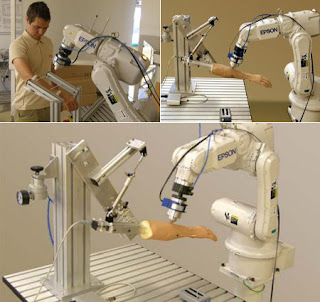Remember that time you went to the zoo, and there were these huge reptiles, like maybe Komodo Dragons, and they just sat around doing nothing? Except every so often one of them would make some vaguely unpleasant noise, or snap viciously at one of the others? And finally it dawned on you that it was just like watching teenagers, and you could have saved yourself the cost of a ticket by hanging out at the mall food court?
Well, as it turns out, you were on to something. Clinical Psychologist Richard Friedman wrote an interesting piece in Sunday’s New York Times in which he argues that many of the behaviors we associate with adolescence — like risk taking, fear, and anxiety — may be a consequence of asynchronous development of different brain structures:
Different regions and circuits of the brain mature at very different rates. It turns out that the brain circuit for processing fear — the amygdala — is precocious and develops way ahead of the prefrontal cortex, the seat of reasoning and executive control. This means that adolescents have a brain that is wired with an enhanced capacity for fear and anxiety, but is relatively underdeveloped when it comes to calm reasoning.
The amygdala is one of the evolutionarily ancient parts of the brain that is involved in things like the “fight or flight” response. If you enjoy using outdated terms and/or trolling brain researchers (and I do!), you would say that this is a component of the “reptilian” brain. The prefrontal cortex is more like the “thinkin’ and plannin'” region, and part of the “mammalian” brain, in that these structures became larger in the evolutionary lineage leading to mammals (and bigger again in primates, and even more biggerer in humans).
If you’re a Daniel Kahneman fan, the reptilian bit is like the fast-thinking System 1, and the mammalian bit is like the slow-thinking System 2.
These two parts are in a sort of balance in children, but, when you enter adolescence, the System 1 stuff matures more quickly, and it dominates the more reflective System 2. Eventually, System 2 catches up, so that the balance is regained in adults.
We’ve recently learned that adolescents show heightened fear responses and have difficulty learning how not to be afraid. In one study using brain M.R.I., researchers at Weill Cornell Medical College and Stanford University found that when adolescents were shown fearful faces, they had exaggerated responses in the amygdala compared with children and adults.
These developmental patterns may help to explain not only certain stereotypical adolescent behaviors, but also perhaps systematic differences in how adolescents and adults respond to certain medications.
Alright, so what are we going to do with this information?
Parents have to realize that adolescent anxiety is to be expected, and to comfort their teenagers — and themselves — by reminding them that they will grow up and out of it soon enough.
Wait, that’s not a magic bullet solution that will allow me to overcome the challenges of raising a child with little or no effort on my part! Between this and the World Cup, it’s like this isn’t even America anymore!




